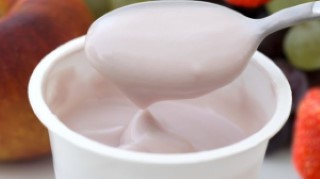 Today there is an overwhelming selection of different yoghurt products. Yoghurts often have extra ingredients added such as sugar, sweeteners, cream, thickeners and flavours or are labelled as natural, probiotic, diet, reduced fat, Greek or high protein. Among all the options in the dairy aisle, how do you know if you are making a healthy choice?
Today there is an overwhelming selection of different yoghurt products. Yoghurts often have extra ingredients added such as sugar, sweeteners, cream, thickeners and flavours or are labelled as natural, probiotic, diet, reduced fat, Greek or high protein. Among all the options in the dairy aisle, how do you know if you are making a healthy choice?
We asked Children’s Diabetes Centre dietitian Barbara Keating for her advice on choosing healthy yoghurt and managing diabetes.
The best method is to find the Nutrition Information Panel and compare products using the per 100g column. It can be difficult to compare products per serve because serving sizes vary. If presented with a 200g tub of yoghurt most of us would eat the whole tub, however, on some of these containers, the serve size information is for only 100g.
One ingredient to watch out for is added sugar. All yoghurt contains some natural milk sugar, about 5g per 100g. You don’t need to search for yoghurt with 0g of sugar; it is only the added sugar that we are concerned about. However, the nutrition label does not distinguish between naturally occurring sugar and added sugar making it difficult to tell how much sugar has been added. As a rough guide, if you are looking for a yoghurt low in added sugars, look for less than 12g of sugar per 100g.
Too much saturated fat can increase insulin resistance and cardiovascular disease. The dairy fat in yoghurt is mainly saturated so it is best to choose lower-fat versions. Again, it is important to look at the nutrition information panel. The term ‘Reduced Fat’ on the front of the pack means that the product contains 25 percent less fat than the fat content of the original version from that company. You will find that the reduced fat version from one brand may actually contain more fat than the full-fat version made by another company. Choose yoghurt with less than 2g of total fat per 100g.
Greek yoghurt is a term that sometimes causes confusion. Is it better than normal yoghurt? Traditional Greek yoghurt is made by straining the yoghurt to remove the liquid whey. This creates thicker yoghurt that is slightly higher in protein and lower in lactose and calcium. Sometimes extra cream is added making it higher in fat. Some Greek-style yoghurts sold in supermarkets today have been thickened by the addition of starches or gums rather than straining. The nutritional content of Greek yoghurts varies a lot so you will need to check the label so see if they meet the guidelines for fat and sugar.
What about claims about probiotics or ‘friendly bacteria”? There is evidence that gut bacteria are important in health. However, the bacteria used to make commercial yoghurt may not survive the journey through our stomach and intestines and take up residence in our gut. The probiotic content of yoghurt can also vary greatly depending on how the yoghurt is packed and stored.
Not all yoghurts are a healthy choice. Some contain more than seven teaspoons of sugar in a serve, more than the sugar in a serve of ice-cream or a glass of Coke. One way to be sure of how much sugar is added to your yoghurt is to buy the natural yoghurt and add the sugar or honey yourself or try flavouring with fresh or dried fruit.
